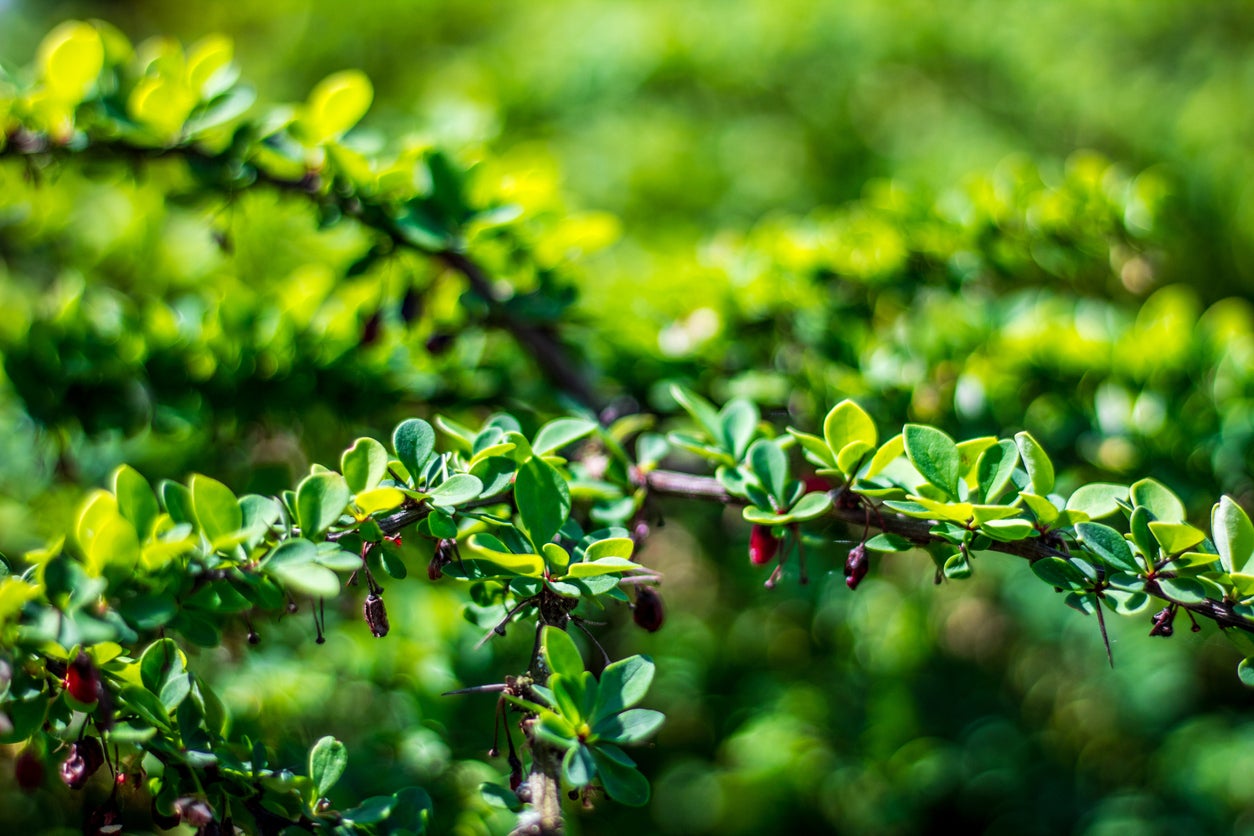Growing Yaupon Hollies: Learn About Yaupon Holly Care


A yaupon holly shrub (Ilex vomitoria) is one of those plants gardeners dream of because it tolerates almost anything. It transplants without shock and thrives in soil that is wet or dry and alkaline or acidic. It needs very little pruning and insects aren't a problem. The tolerant nature of this shrub makes yaupon holly care a breeze.
Info on Yaupon Holly
Like most hollies, yaupon is dioecious. This means that only the female plants produce berries, and there must be a male plant nearby to fertilize the flowers. One male yaupon holly produces enough pollen to fertilize several female plants. Standard yaupon hollies grow 15 to 20 feet (4.5-6 m.) tall, but there are several cultivars that you can maintain at heights of 3 to 5 feet (1-1.5 m.). 'Compacta,' 'Nana,' and 'Schillings Dwarf' are among the best of the dwarfs. If you prefer yellow berries, try 'Yawkey' or 'Wiggins Yellow.' 'Fulsom's Weeping,' 'Pendula,' and 'Gray's Weeping' are weeping forms with long, pendulous branches. Regardless of the cultivar, growing yaupon hollies brings strong texture and unsurpassed color to winter landscapes. Native to the southeastern United States, it is hardy in USDA plant hardiness zones 7b through 9.
How to Care for a Yaupon Holly
Plant yaupon holly in a location with plenty of sun. Although it tolerates afternoon shade, you'll get more, and better, berries in full sun. Keep the soil around the shrub moist until it becomes established. Don't amend the soil or fertilize yaupon hollies at planting time unless the soil is very poor. Use a 2 to 3 inch (5-8 cm.) layer of organic mulch to keep the soil evenly moist. Fertilize yaupon hollies annually in spring. Avoid high-nitrogen fertilizers or spread the fertilizer at half the recommended rate. Lawn fertilizers are very high in nitrogen, so avoid spreading them near your hollies.
Pruning Yaupon Holly Bushes
Yaupon hollies look their best when left to develop their own, naturally attractive shape. A little judicious snipping to remove damage and wayward growth is all it needs. If you want to grow it as a small tree, limit it to a single upright trunk and remove the lower side branches. Yaupons aren't the best choice for formal, sheared hedges, but they make lovely informal screens. Long-neglected hollies can become an eyesore. One way to restore them is through a pruning practice called hat-racking. Cut the uppermost lateral branches to short stubs and as you move further down leave them a little longer. When you are done, the plant should have a cone shape. At first, you might think you have transformed your eyesore into something even worse, but as new growth fills in, it will develop a nice shape.
Gardening tips, videos, info and more delivered right to your inbox!
Sign up for the Gardening Know How newsletter today and receive a free copy of our e-book "How to Grow Delicious Tomatoes".

Jackie Carroll has written over 500 articles for Gardening Know How on a wide range of topics.
-
 Looking For Plants To Give You The Soft And Fuzzies? Try These 5 Fuzzy Leaf Plant Options
Looking For Plants To Give You The Soft And Fuzzies? Try These 5 Fuzzy Leaf Plant OptionsLovers of texture, drama, silver foliage and tactile plants will adore these special sensory garden additions. These fuzzy leaf plant options will leave you all aglow
By Susan Albert
-
 Get Ready For A Summer Of Hummers! Grow These Full Sun Hummingbird Plants and Flowers
Get Ready For A Summer Of Hummers! Grow These Full Sun Hummingbird Plants and FlowersIf you’re lucky enough to enjoy a sunny backyard, make sure you are maxing out on your pollinator opportunities and grow these full sun hummingbird plants and flowers
By Tonya Barnett